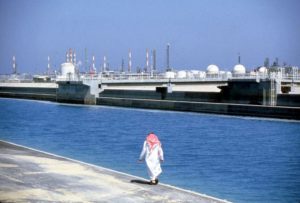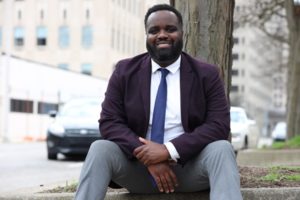Genocide looms
JUL 26, 2023
By Mark J. Wood, Refugees International
When war broke out in Khartoum, the capital of Sudan, in April 2023, those of us who know the region well feared what would happen to the west, in Darfur. In 2003, former Sudanese President Omar al-Bashir called on the Janjaweed Arab militia to quell an uprising in Darfur. The systematic raping, pillaging, looting, and scorched-earth tactics of the Janjaweed led to the deaths of more than 300,000 people in what has been recognized as a genocide.
The paramilitary Rapid Support Forces (RSF) of today, which is battling the Sudanese Armed Forces for control of the country, traces its origins to the Janjaweed of 20 years ago. The rise of ethnically targeted violence in the region now threatens a recurrence of that dark chapter. Experts and organizations from the U.S. Holocaust Memorial Museum to the UN’s Special Adviser on the Prevention of Genocide are once again warning of genocide.
Yet the world’s response remains muted and lacks a clear strategy for Sudan. The United States has placed sanctions on Sudanese leaders, worked with Saudi Arabia to broker short-lived ceasefires, and seems set to belatedly appoint a Special Envoy. But there is another measure taken in response to the violence of 20 years ago that is yet to be seriously considered— military intervention. This can take the form of a United Nations Peacekeeping force, or a hybrid force in partnership with the African Union, which seeks to enforce the Responsibility to Protect (R2P).
While geo-political barriers to such a step are formidable, the pace and brutality of today’s violence demand it be considered.
Following the struggles to respond swiftly and prevent war crimes and crimes against humanity in the 1990s, the Responsibility to Protect, a “political commitment to end the worst forms of violence and persecution,” came into being by an act of the United Nations General Assembly in 2005. R2P stands on three pillars: 1) Every state has the responsibility to protect its populations from mass atrocities; 2) The international community has a responsibility to assist states to meet their obligations; 3) If a state is failing to protect its population, the international community must take appropriate action in line with the UN Charter.
It is clear based on the situation in Sudan and Darfur that the authorities in Sudan are failing in their obligation to protect civilians. Pillars two and three need to be enforced. Invoking R2P will lay the foundation for what will be needed when this violence subsides—a stabilization peacekeeping force. The UN, which was founded on the principle “to save succeeding generations from the scourge of war” must endeavor to use the tools at its disposal to save the people of Sudan.
At the beginning of the Millennium, peacekeeping was still viewed as a powerful and effective tool to protect civilians. To be sure, peacekeepers were limited by ambiguous and unrealistic mandates and a lack of resources to effectively carry out missions. But they saw some success, notably in Sierra Leone, Cote d’Ivoire and Liberia. However, today in a divided Security Council, a tepid approach is taken towards peacekeeping. China and Russia continue to speak in echo chambers and maintain a hardline view of sovereignty to avoid any precedent for intervention in their own countries. This limits constructive dialogue and effective utilization of a key tool in the UN Security Council’s tool kit.
Peacekeepers in Sudan are not infeasible. There is precedent for peacekeepers in Darfur, and it is worth considering. In June 2021, the African Union–United Nations Mission Hybrid Operation in Darfur (UNAMID) completed its withdrawal following 13 years trying to stabilize the region. The operation brought relative stability and a semblance of normality, highlighting the effectiveness of peacekeeping operations. It is abundantly clear three months into the war that no one among Sudanese authorities is fostering a substantial effort to ensure civilians are protected, particularly those in Darfur.
Under chapters VI, VII, and VIII of the UN Charter, the Security Council is instructed to take the appropriate action to settle disputes; act when peace is being breached; and utilize regional arrangements to bring about peace. There is a precedent of having regional provisions, through diplomatic, operational, and joint operational support, under Chapter VIII. For example, in the former Yugoslavia, NATO provided air support for UN troops on the ground. And the Organization of American States, in conjunction with the UN, launched MICAH, a civilian mission in Haiti in 1993. The role of the East African bloc IGAD, and its call to send a standby force to protect civilians and create a humanitarian corridor, is a welcomed step. With a regional bloc providing military support, the UN secretariat can use its good offices to provide humanitarian assistance and facilitate a road map toward nation building. Diplomacy must continue until cessation of hostilities is in place, and an observer mission is deployed.
The conflict in Darfur—once again on the lines of ethnicity, tribal allegiances, and coveted minerals—has the potential to catapult the region into a new dimension. The international community should not be surprised at the repeated tragedies unfolding in Darfur and the country at large. Decades of impunity emboldened the protagonists of today’s conflict. The instruments to protect civilians are there. The UN Security Council has its mandate. Lives can be saved if swift action is taken. We cannot afford to fail the people of Sudan who never asked for this—and certainly do not deserve it.
Mark J. Wood is a program associate at Refugees International




